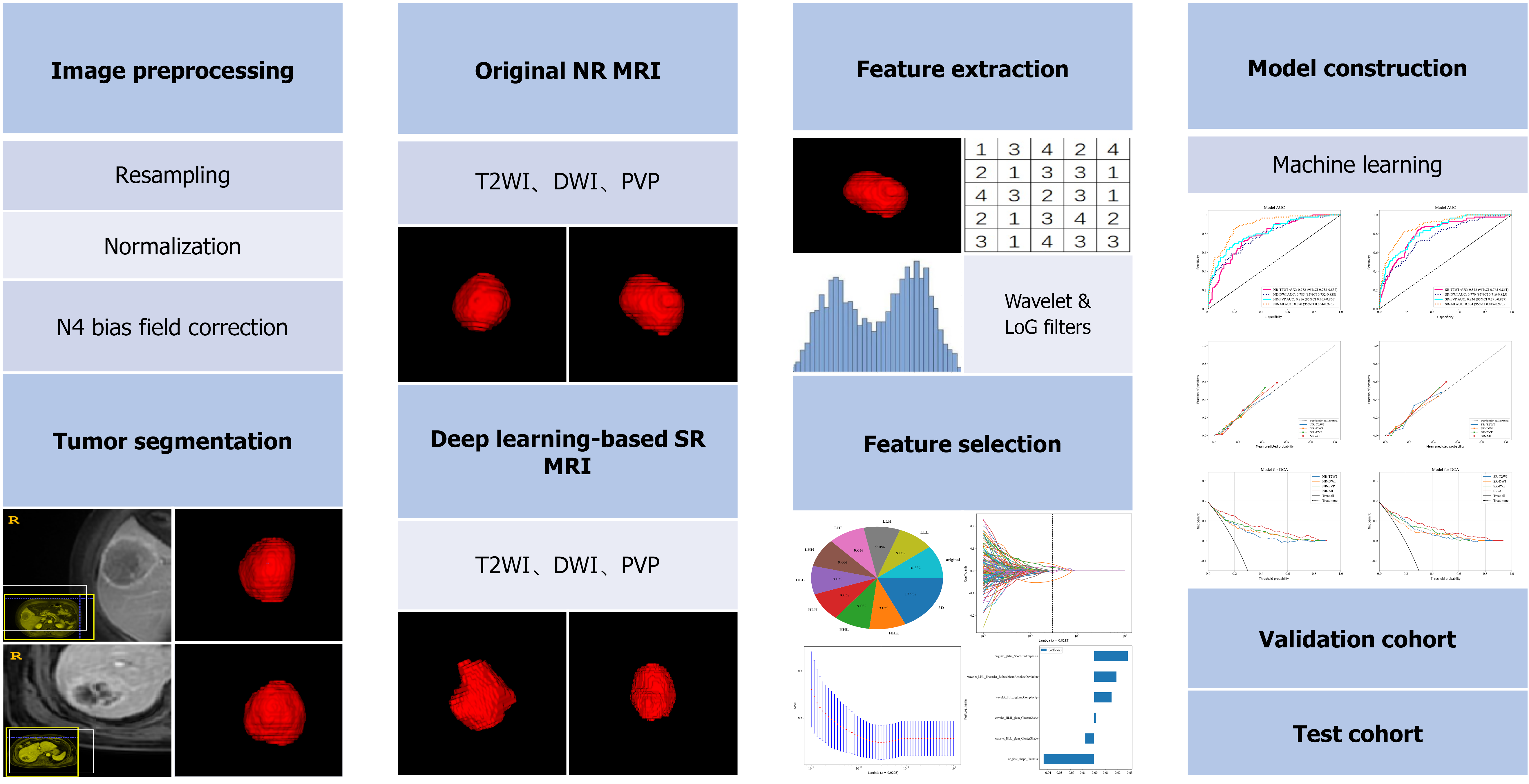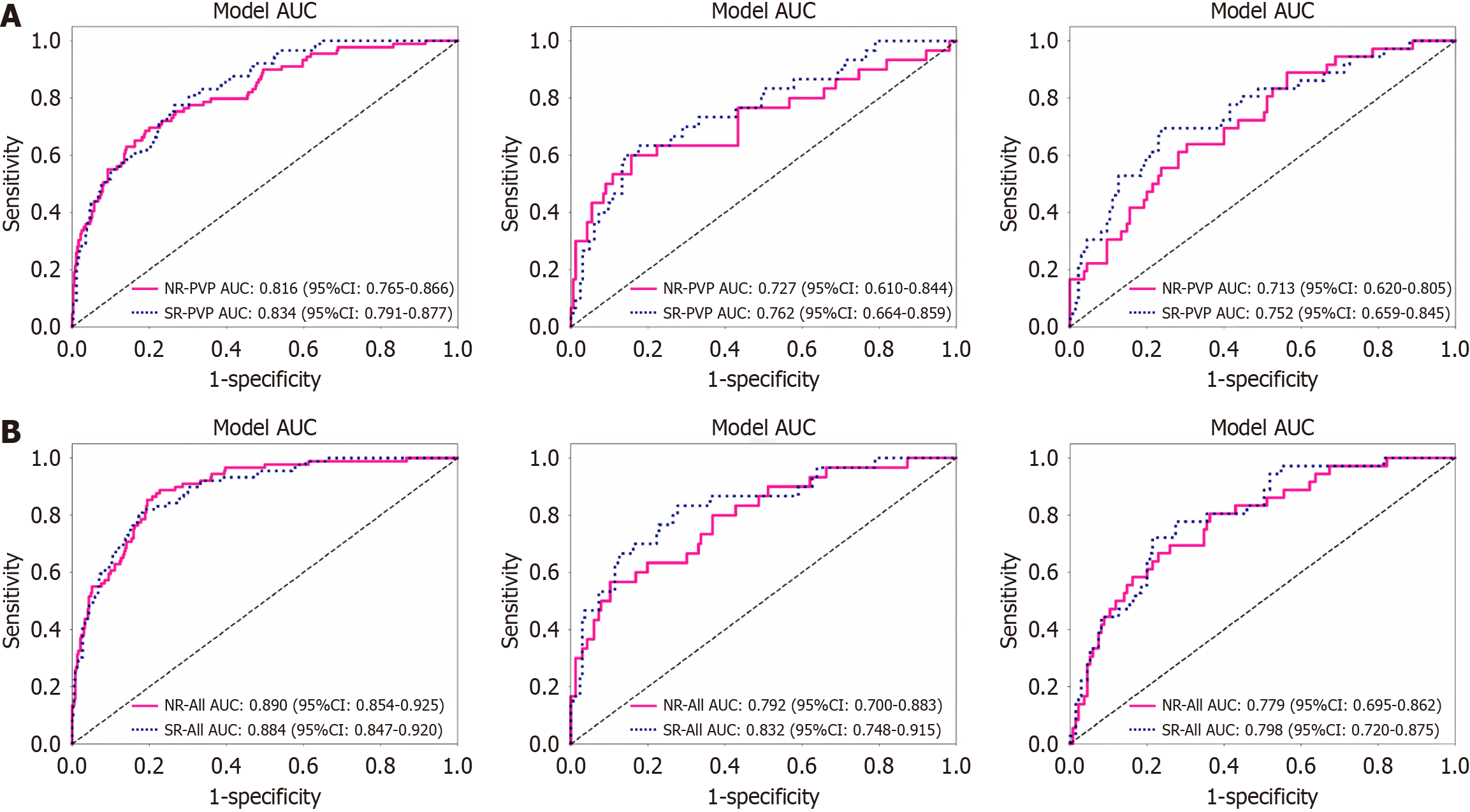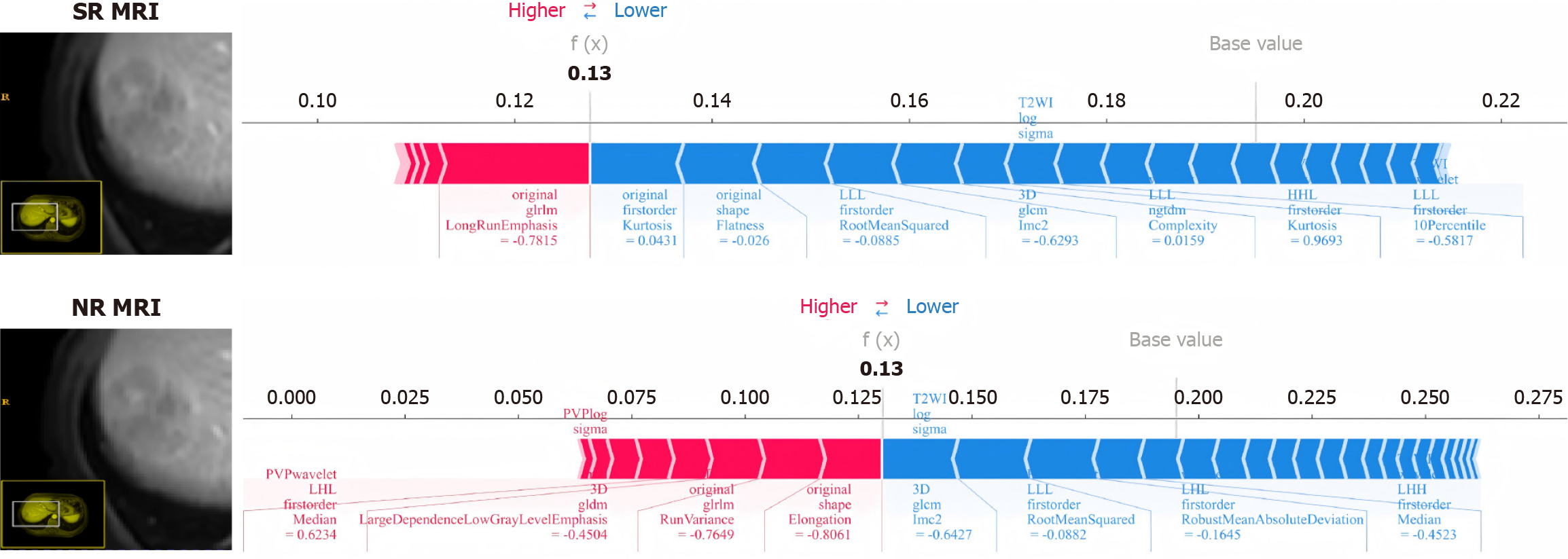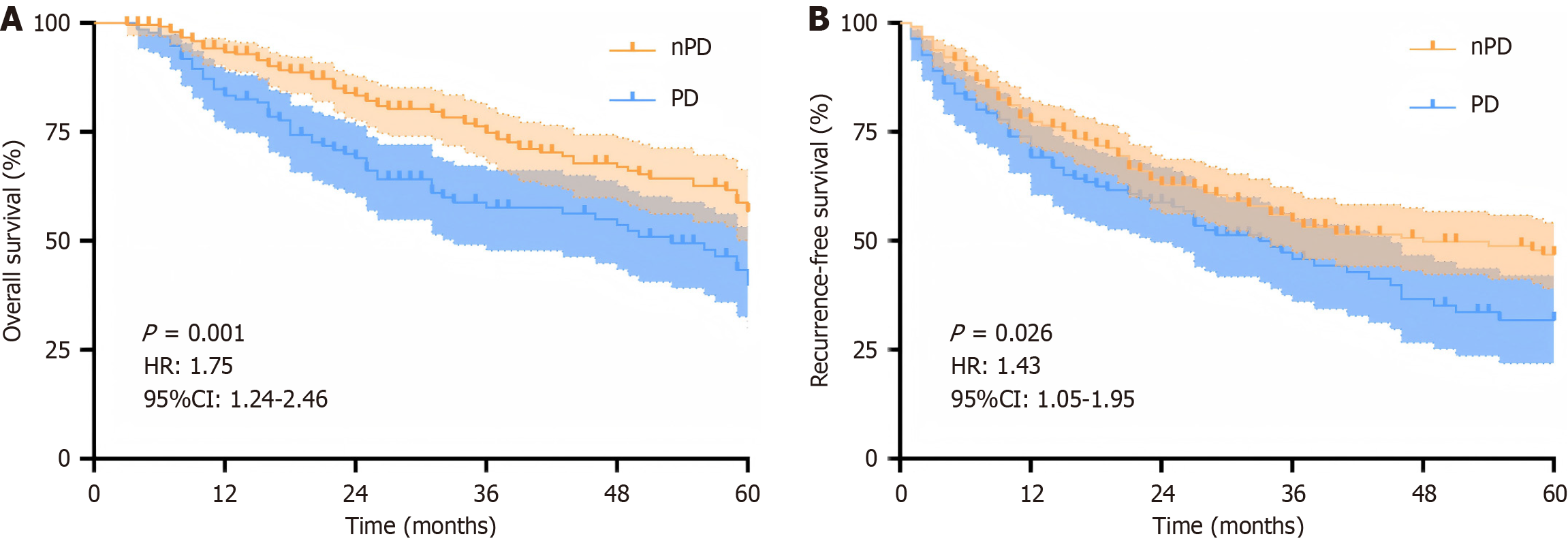Copyright
©The Author(s) 2025.
World J Gastroenterol. Sep 14, 2025; 31(34): 111541
Published online Sep 14, 2025. doi: 10.3748/wjg.v31.i34.111541
Published online Sep 14, 2025. doi: 10.3748/wjg.v31.i34.111541
Figure 1 Diagram of generative adversarial networks used to generate super-resolution images from original normal-resolution images.
MRI: Magnetic resonance imaging.
Figure 2 Study flowcharts of radiomics analysis.
T2WI: T2-weighted imaging; DWI: Diffusion-weighted imaging; PVP: Portal venous phase; NR: Normal-resolution; SR: Super-resolution; MRI: Magnetic resonance imaging.
Figure 3 Comparison of receiver operating characteristic curves between normal-resolution and super-resolution magnetic resonance imaging in training, validation, and test cohorts, respectively.
A: Portal venous phase model; B: All-sequence model. “All” including three sequences (T2-weighted imaging, diffusion-weighted imaging, portal venous phase). AUC: Area under the curve; NR: Normal-resolution; SR: Super-resolution; PVP: Portal venous phase.
Figure 4 SHapley Additive exPlanations plot of super-resolution magnetic resonance imaging radiomics model based on XGBoost.
SHAP: SHapley Additive exPlanations plot; PVP: Portal venous phase; T2WI: T2-weighted imaging; DWI: Diffusion-weighted imaging.
Figure 5 SHapley Additive exPlanations plot force plots demonstrated the difference between super-resolution and normal-resolution magnetic resonance imaging in distinguishing tumor differentiation in the same patient.
NR: Normal-resolution; SR: Super-resolution; MRI: Magnetic resonance imaging.
Figure 6 Prognostic value of the signature from super-resolution magnetic resonance imaging in histopathologic grade of hepatocellular carcinoma.
A: Overall survival; B: Recurrence-free survival; PD: Poorly differentiated; nPD: Non-poorly differentiated.
- Citation: Wang ZZ, Song SM, Zhang G, Chen RQ, Zhang ZC, Liu R. Multiparametric magnetic resonance imaging of deep learning-based super-resolution reconstruction for predicting histopathologic grade in hepatocellular carcinoma. World J Gastroenterol 2025; 31(34): 111541
- URL: https://www.wjgnet.com/1007-9327/full/v31/i34/111541.htm
- DOI: https://dx.doi.org/10.3748/wjg.v31.i34.111541


















